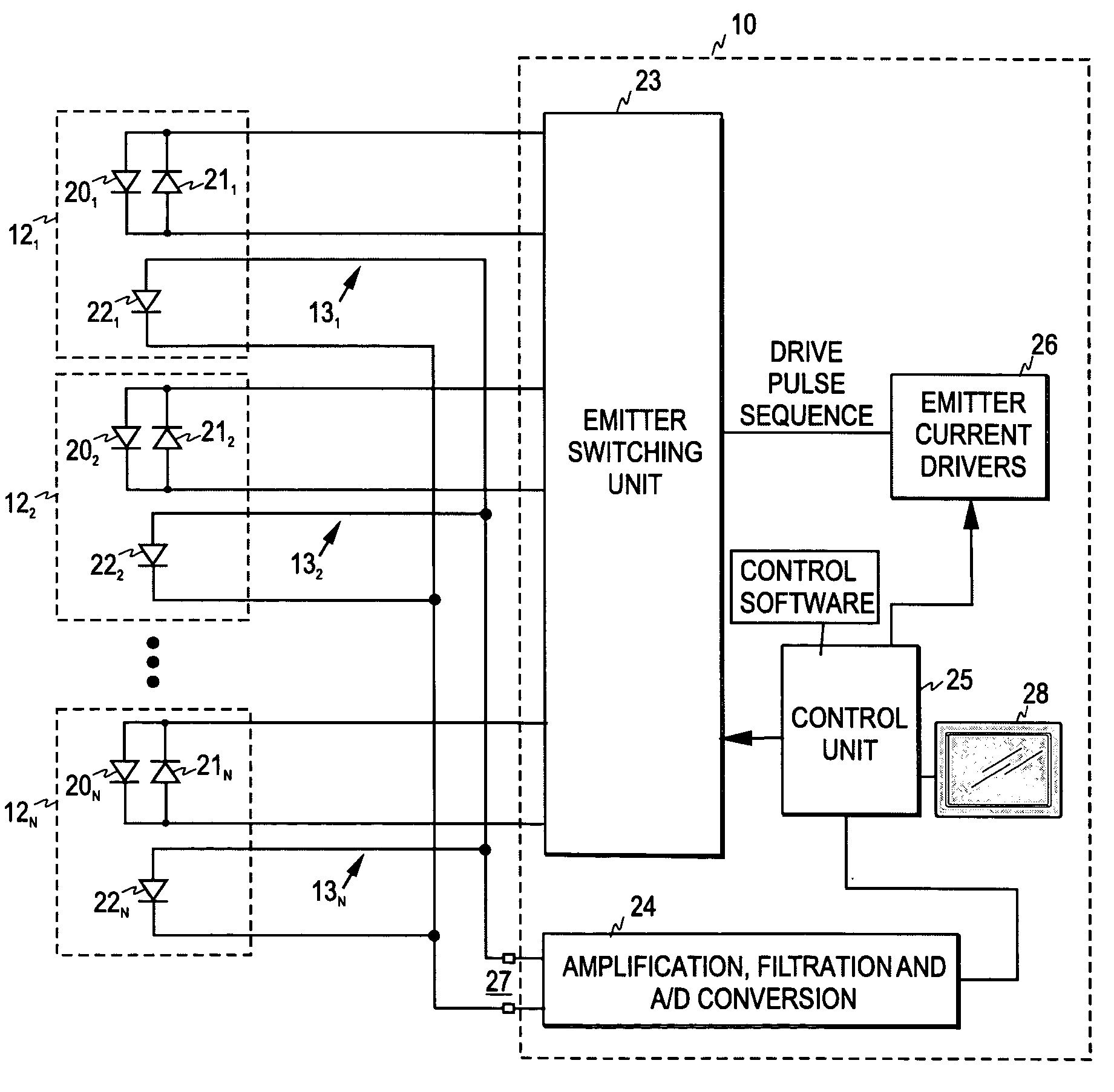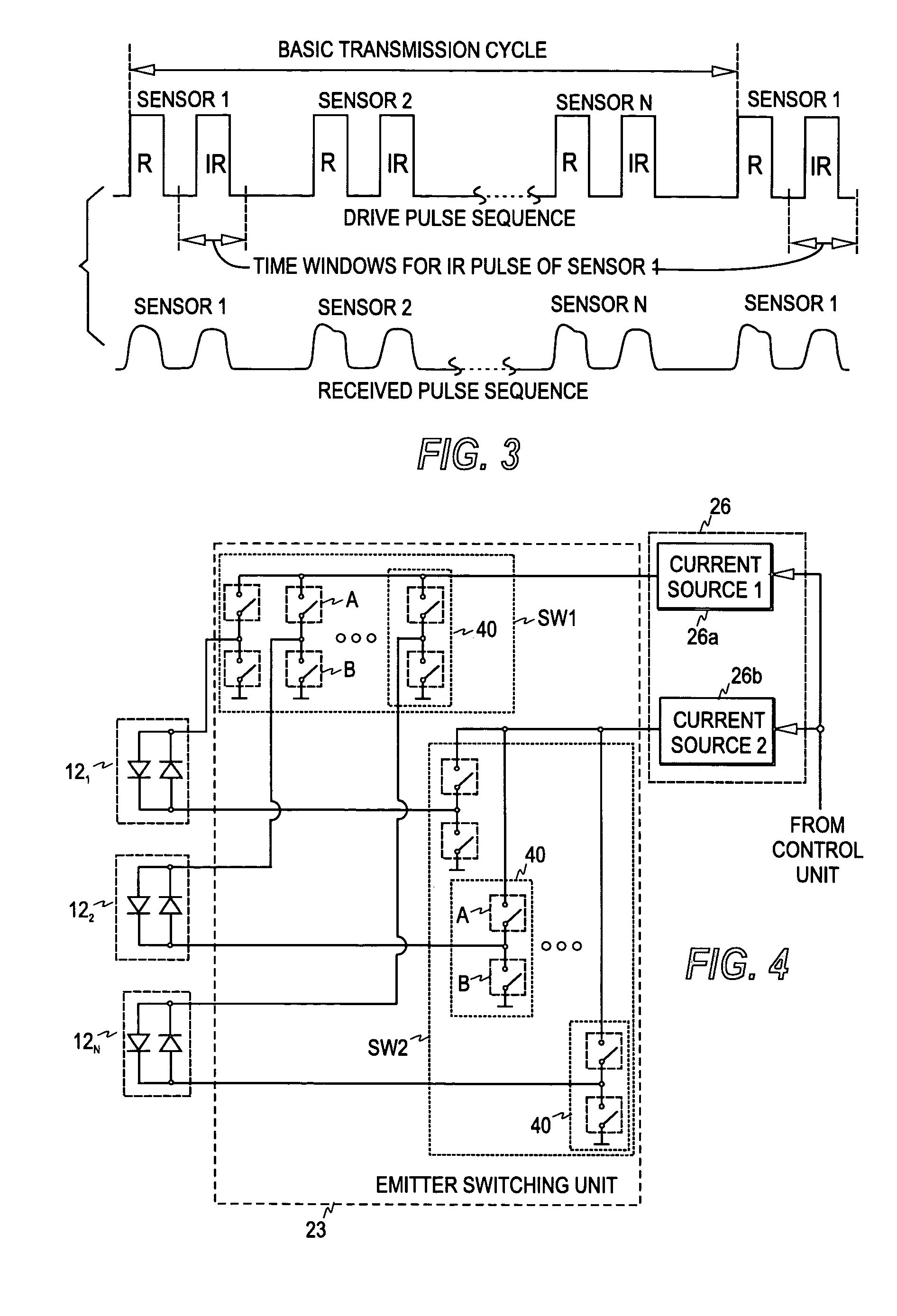Monitoring device for multiple tissue sites
a monitoring device and tissue technology, applied in the field of monitoring devices, can solve the problems of the large multiplication of hardware required by parallel measurements, and achieve the effect of cost-effectiveness
- Summary
- Abstract
- Description
- Claims
- Application Information
AI Technical Summary
Benefits of technology
Problems solved by technology
Method used
Image
Examples
Embodiment Construction
[0027] A monitoring device of the invention comprises a computerized measuring unit and a plurality of sensors that may be attached to multiple tissue sites. Each sensor includes at least one light source, i.e. emitter element, for sending an optical signal through the tissue and a photo detector for receiving the signal transmitted through of reflected from the tissue. The number of emitter elements in a sensor depends on the application used. Plethysmographic data, for example, may be measured with only one emitter element (one wavelength), but a pulse oximeter typically has two or more emitter elements in each sensor.
[0028]FIG. 1 illustrates one embodiment of the general measurement arrangement of the invention. A single SpO2 measurement apparatus 10 is provided with N sensors 121, to 12N attachable to multiple tissue sites. As noted above, each sensor comprises at least one emitter element for emitting radiation at a minimum of one wavelength and a detector for receiving the ra...
PUM
 Login to View More
Login to View More Abstract
Description
Claims
Application Information
 Login to View More
Login to View More - R&D
- Intellectual Property
- Life Sciences
- Materials
- Tech Scout
- Unparalleled Data Quality
- Higher Quality Content
- 60% Fewer Hallucinations
Browse by: Latest US Patents, China's latest patents, Technical Efficacy Thesaurus, Application Domain, Technology Topic, Popular Technical Reports.
© 2025 PatSnap. All rights reserved.Legal|Privacy policy|Modern Slavery Act Transparency Statement|Sitemap|About US| Contact US: help@patsnap.com



